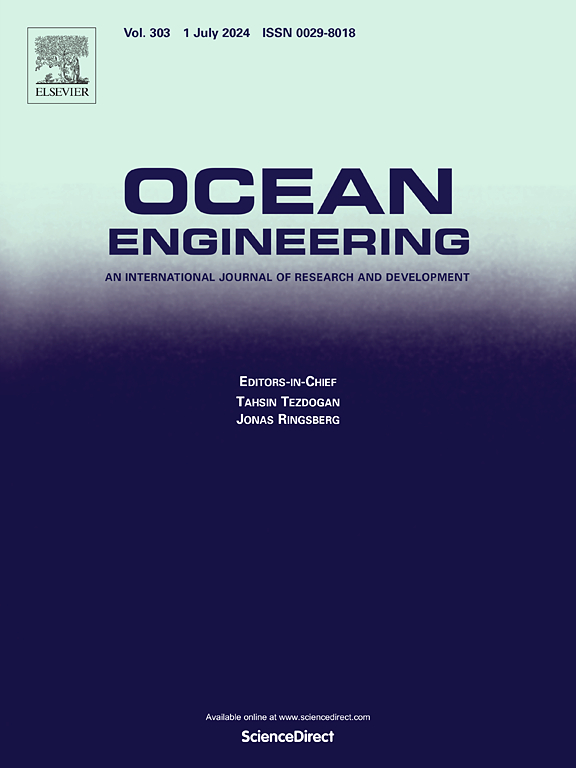Experimental and numerical simulation study of drag reduction on AUV grooved surfaces
IF 4.6
2区 工程技术
Q1 ENGINEERING, CIVIL
引用次数: 0
Abstract
In the study of hydrodynamic performance of Autonomous Underwater Vehicles (AUVs), drag reduction is a crucial aspect that can significantly lower energy consumption and enhance operational range. Groove drag reduction, a form of passive drag reduction technology, is widely employed across various fields due to its simple structure and broad applicability. Implementing grooved surfaces on AUVs is an effective solution for reducing drag. This paper investigates the resistance of AUVs with grooved surfaces through experimental methods and comparative testing. A full-scale numerical simulation utilizing two-phase flow is also conducted, revealing that the resistance reduction results align closely with the trends observed in model tests. The maximum drag reduction achieved in the experiments is 8.13%. While discrepancies exist between numerical and experimental results, the overall physical principles remain consistent.
减少 AUV 沟槽表面阻力的实验和数值模拟研究
在自主潜水器(AUV)的水动力性能研究中,减少阻力是一个至关重要的方面,它可以显著降低能耗,提高续航能力。沟槽减阻作为一种被动减阻技术,因其结构简单、适用性广而被广泛应用于各个领域。在自动潜航器上采用凹槽表面是减少阻力的有效解决方案。本文通过实验方法和对比测试研究了带有沟槽表面的 AUV 的阻力。此外,还利用两相流进行了全尺寸数值模拟,结果表明阻力减少的结果与模型试验中观察到的趋势非常吻合。实验中实现的最大阻力降低率为 8.13%。虽然数值结果和实验结果之间存在差异,但总体物理原理保持一致。
本文章由计算机程序翻译,如有差异,请以英文原文为准。
求助全文
约1分钟内获得全文
求助全文
来源期刊

Ocean Engineering
工程技术-工程:大洋
CiteScore
7.30
自引率
34.00%
发文量
2379
审稿时长
8.1 months
期刊介绍:
Ocean Engineering provides a medium for the publication of original research and development work in the field of ocean engineering. Ocean Engineering seeks papers in the following topics.
 求助内容:
求助内容: 应助结果提醒方式:
应助结果提醒方式:


